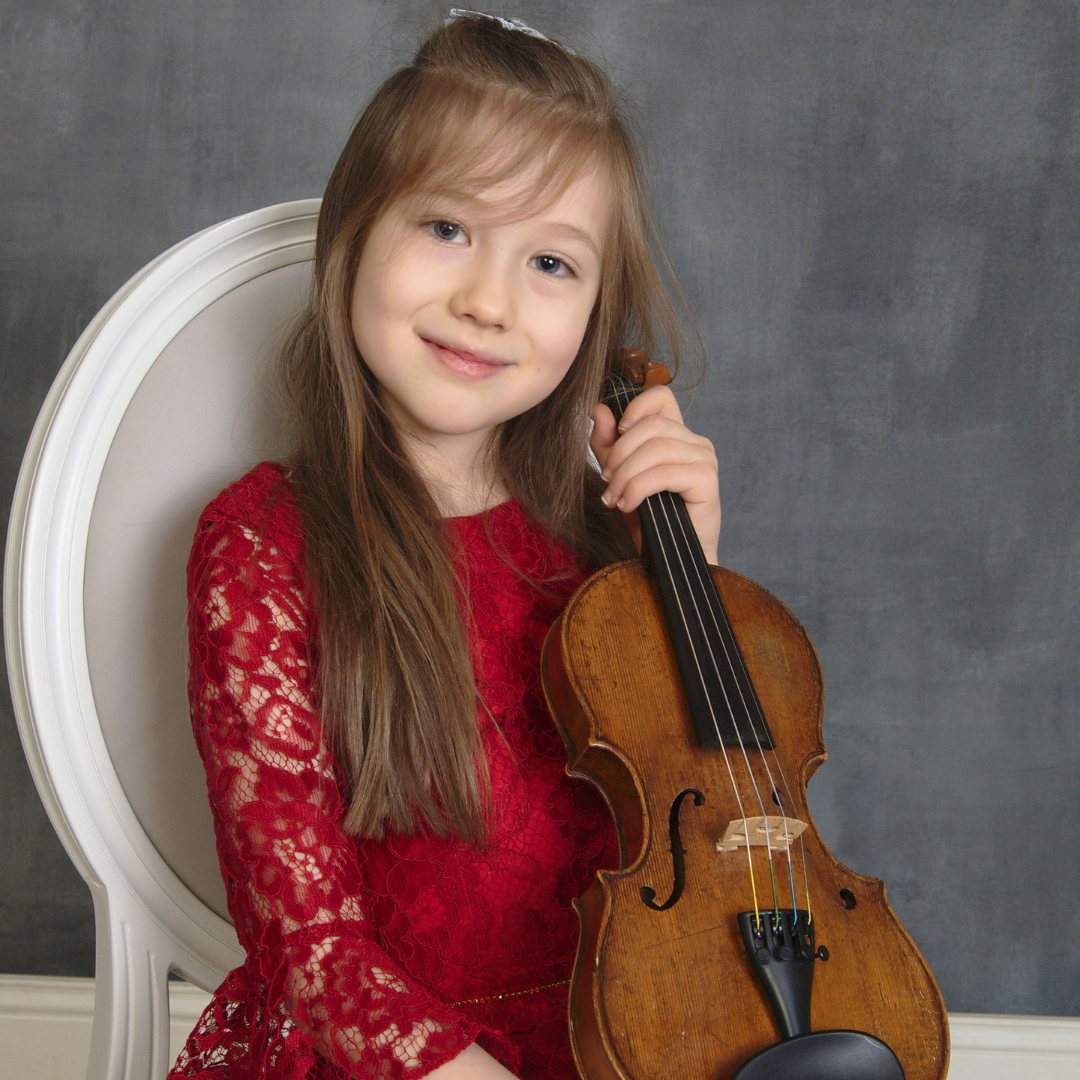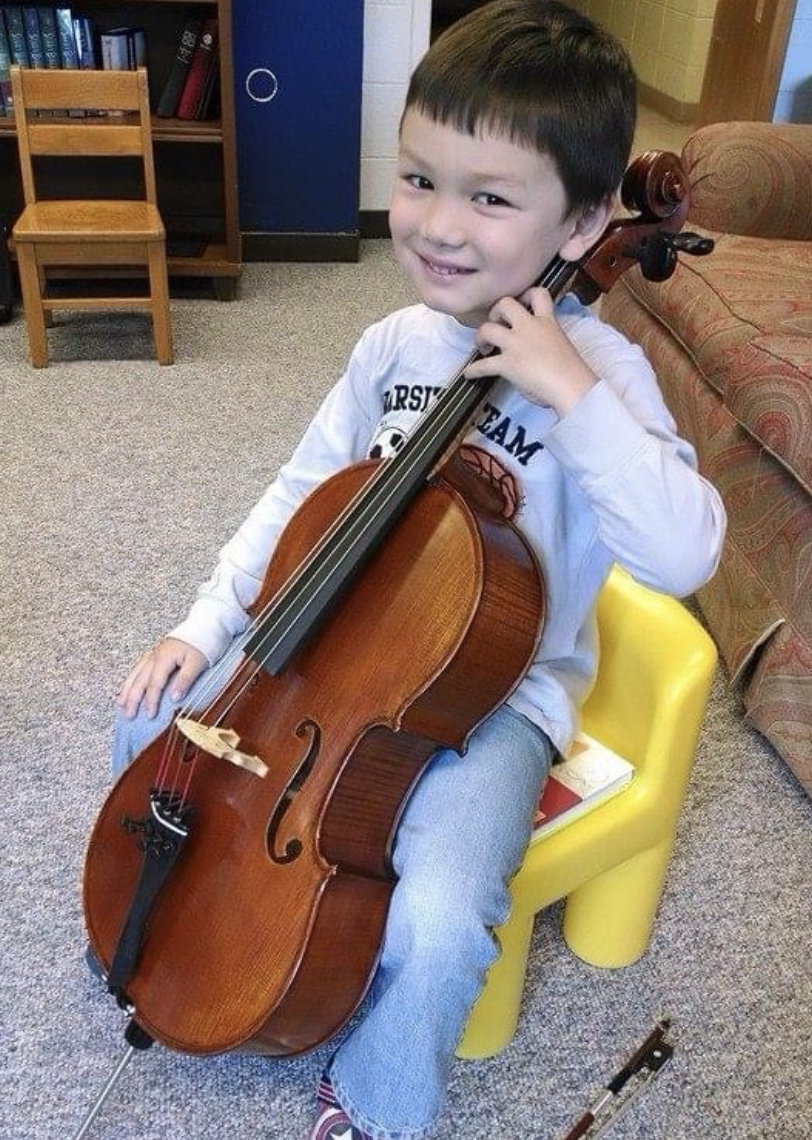Our Daily Warm Ups! ⏰
I like warming up with the scale in the key my solo piece is in. For example, if I'm working on Korngold's Violin Concerto (which is in D major), I'll start with a D major scale and some arpeggios. I use my teacher (Mrs. Vamos') scale book (linked here) which has a bunch of really amazing patterns and exercises I like to go through daily. The Carl Flesch Scale Systems Book (linked here) is also amazing for technique and intonation work!
I work on open string exercises, Galamian scales in the key of my pieces, string crossing exercises (double stops), various hexachord/finger patterns, and vibrato exercises from my teacher's technique book: An Artist's Guide to Cello Technique - Printed Booklet | Cello Kartman
Etudes from: Popper's High School of Cello Playing Etudes
I start by tapping my fingers on the fingerboard. each finger taps each string four times, three times, two times, and then one. Then, I play two scales going through an acceleration sequence. Next, I practice all the major arpeggios using stars and separate bows. I end with octaves practice- I highly recommend!
I typically work on exercises and etudes as a distinct part of my practice routine, and not really necessarily to warm myself up! When I do want to warm up my fingers and prepare myself for the heavier parts of my practice, I enjoy improvising melodies. Doing this helps me begin to feel inspired and opens up my mind for the creativity required for interpretation, while releasing enough of my energy to make me feel able to work hard on the more repetitive parts of practicing.
I start with bow exercises- I put my bow close to the bridge and hold a random note for as land as possible. I do it with as much bow weight and little bow speed as possible. I then move into slow practicing scales.
Warm Up Routine Tips
Having a warm up routine is so important. It may be tempting to directly jump into your pieces, but warming up will greatly benefit your technique:
🎻 it will help your passagework in the pieces you are playing
🎻 it will make learning new pieces easier!
What Should Be In A Warm Up?
You warm up can touch on a lot of different concepts. If you're not sure where to start, try working on the scales in the keys of your piece. Scroll down for a scales cheat sheet 🙂
When playing your scales, try experimenting with different tempos, articulations, and bow speeds. If needed, use a drone pitch (can never go wrong with the first note of the scale you’re on!) and try to match each pitch with it. If it is perfectly in tune, you'll feel it.
C Major C D E F G A B C
G Major (1#) G A B C D E F# G
D Major (2#) D E F# G A B C# D
A Major (3#) A B C# D E F# G# A
E Major (4#) E F# G# A B C# D# E
B Major (5#) B C# D# E F# G# A# B
F# Major (6#) F# G# A# B C# D# E# F#
C# Major (7#) C# D# E# F# G# A# B# C#
F Major (1b) F G A Bb C D E F
Bb Major (2b) Bb C D Eb F G A Bb
Eb Major (3b) Eb F G Ab Bb C D Eb
Ab Major (4b) Ab Bb C Db Eb F G Ab
Db Major (5b) Db Eb F Gb Ab Bb C Db
Gb Major (6b) Gb Ab Bb Cb Db Eb F Gb
Cb Major (7b) Cb Db Eb Fb Gb Ab Bb Cb
C Chromatic C C# D D# E F F# G G# A A# B C
C B Bb A Ab G Gb F E Eb D Db C
Minor Scales
• Harmonic minor – raise the 7th scale degree
• Melodic minor – raise the 6th and 7th scale degree (when going up), revert to natural minor (when going down)
A natural minor: A B C D E F G A
A harmonic minor: A B C D E F G# A
A melodic minor: A B C D E F# G# A
E natural minor: E F# G A B C D E
E harmonic minor: E F# G A B C D# E
E harmonic minor: E F# G A B C# D# E
B natural minor: B C# D E F# G A B
B harmonic minor: B C# D E F# G A# B
B natural minor: B C# D E F# G# A# B
F# natural minor: F# G# A B C# D E F#
F# harmonic minor: F# G# A B C# D E# F#
F# melodic minor: F# G# A B C# D# E# F#
C# natural minor: C# D# E F# G# A B C#
C# harmonic minor: C# D# E F# G# A B# C#
C# melodic minor: C# D# E F# G# A# B# C#
D natural minor: D E F G A Bb C D
D harmonic minor: D E F G A Bb C# D
D melodic minor: D E F G A B C# D
G natural minor: G A Bb C D Eb F G
G harmonic minor: G A Bb C D Eb F# G
G melodic minor: G A Bb C D E F# G
C natural minor: C D Eb F G Ab Bb C
C harmonic minor: C D Eb F G Ab Bb C
C melodic minor: C D Eb F G A B C
F natural minor: F G Ab Bb C Db Eb F
F harmonic minor: F G Ab Bb C Db E F
F melodic minor: F G Ab Bb C D E
Other warm up ideas
🎻Bowing Exercises – Practice the different bowing types in the chart below on your open strings or in scales
🎻String Crossing Exercises – Practice smooth and controlled transitions between your open strings
🎻Begin playing two strings at a time, like you are tuning. Make sure each string sounds equally balanced. After you get comfortable, slightly lift your bow at the end of the double stop- just enough to get to other string. Repeat that at the other bow change, making sure you always stay near the double stop bow position, so that the string connection is done with a minimal motion.
🎻If this is too easy, you can also do this with double stops.
🎻Shifting Drills – Is there a shift in your piece that's bothering you? Try putting on a metronome* at a slow tempo (ex. 60 quarter note) and moving slowly between the two notes! Do this until you hit it every time. However, make sure to pay attention to both your accuracy and your hand position. When things go slower, it's easy to do things we normally can't do at a faster tempo.
🎻Vibrato Exercises– See the music below: Try doing the ‘Italian Vibrato’ exercise on different notes/strings of your choice with a metronome at 60 (quarter note). Make sure to STAY LOOSE!!! ⚠
🎻Etudes – An etude is a small piece focused on a certain technique scale. Ask your teacher to assign you an etude based on the piece you're playing!
🎻Sight-Reading Practice🎈 – Find the sheet music for one of your favorite songs and try to play it perfectly!
Other recommended warm-up & scale books!
Cello
High School of Cello Playing Op.73 (Popper, David)









